There are hundreds of flowering plants that start with the letter S, but to help you out, we’ve picked out 14 of the most common species.
Some of these flowers may be rare, and you may never see them in person, depending on where you live, while others may be found in your backyard.
Whether you’re working on a school project or struggling with the crossword, you’ll find a basic description of 14 flowers that start with S below.
Table of Contents
1. Snowdrops

The snowdrop is possibly the most well-known herald of spring, as they usually flower in late winter or very early spring (making them one of the very few species to do so).
Snowdrops are extremely easy to recognize – they’re small plants with green leaves and stems, while the flowers are white and have six bell-shaped petals (three outer, three inner petals).
In the wild, snowdrops occur in almost all of Europe and parts of the Middle East and western Asia. They can easily be grown in home gardens.
2. Snowflakes

It’s best to talk about snowflakes right after snowdrops since the two species are often confused for one another.
Snowflakes also have six bell-shaped petals, but the plant itself is taller (up to 6 inches) and has less leaves than the snowdrop.
There are nine species in the snowflake genus, all native to Europe and North Africa.
While they haven’t been introduced to other places, you can easily plant them at home.
Their physical similarities aren’t the only reason snowflakes and snowdrops are often confused, as they also share habitats.
3. Soapworts
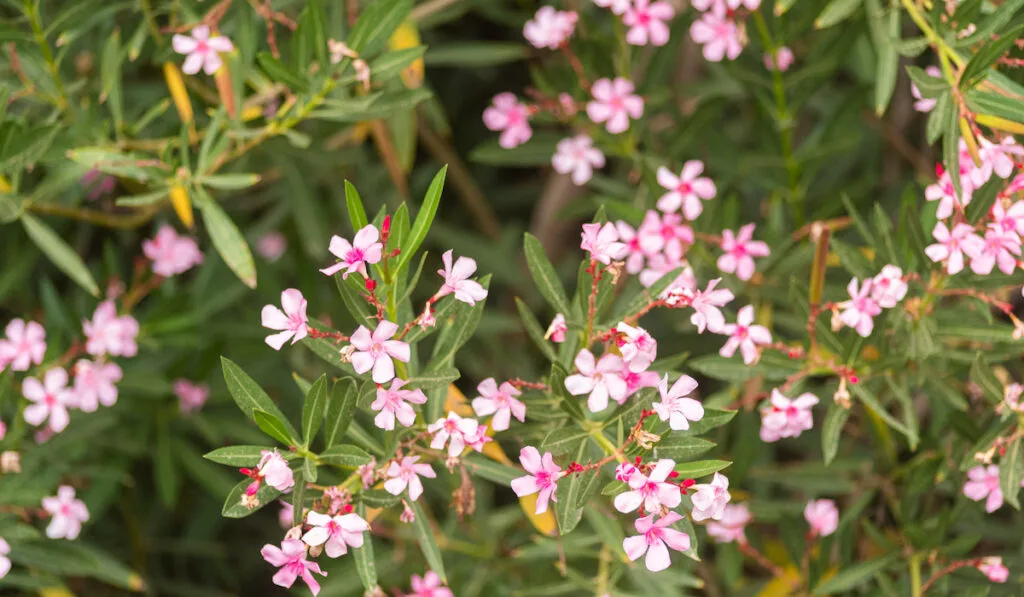
There are almost forty species of soapworts in the world, and while they’re native to Europe and Asia, some of them have been introduced to other places, such as North and South America.
In those places, they’re often invading the local ecosystem, stirring up trouble.
Soapwort flowers are symmetrical, pink flowers that secrete a lovely scent.
All soapworts contain saponin, which is why they were used to make soap (hence the name).
Saponin is toxic to animals and humans (but not to a lethal level), and its ingestion will lead to vomiting and strong intestinal reactions.
4. Stonecrops
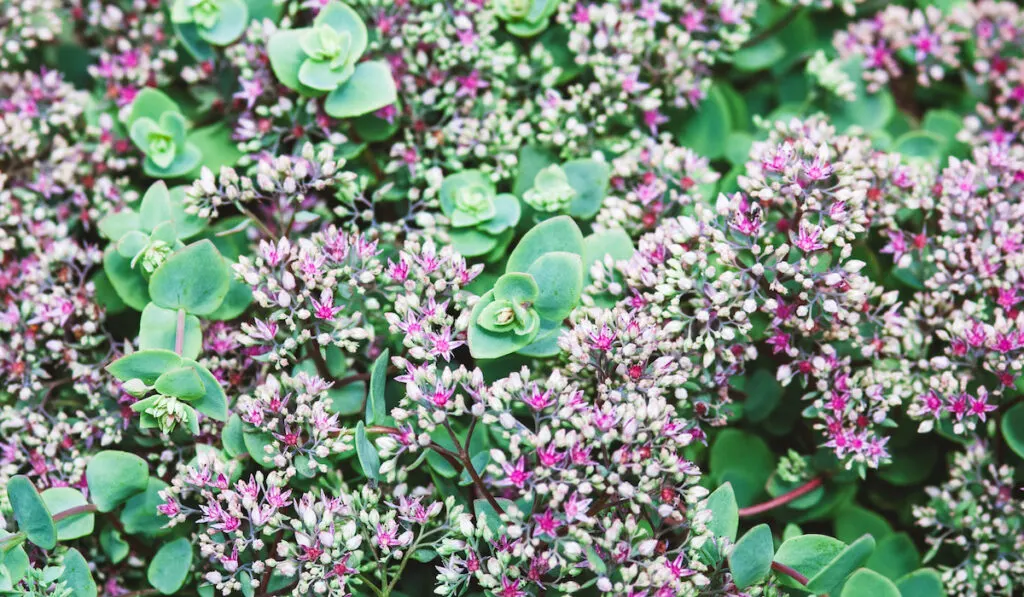
There are almost 500 species of stonecrops, spreading across every continent except for Australia and Antarctica.
These flowers, usually with yellow petals, are mostly edible and have been traditionally eaten by humans and animals alike (although we do not in any way suggest you try it yourself, as some species are toxic).
Because of their thick growth, stonecrops were traditionally used for roofing and making huts waterproof!
5. Snapdragons

Snapdragons were named after their resemblance to a dragon opening and closing its mouth, so you might also find them under the name ‘dragon flowers.’
They’re common in Europe, North America, and North Africa, where they usually occur in rocky areas.
There are about thirty species of snapdragons, all of which differ from one another in description, with yellow, red, pink, white, purple, and orange flowers.
The best way to recognize them is by the shape of the petals, which look like the jaws of a dragon.
6. Speedwells
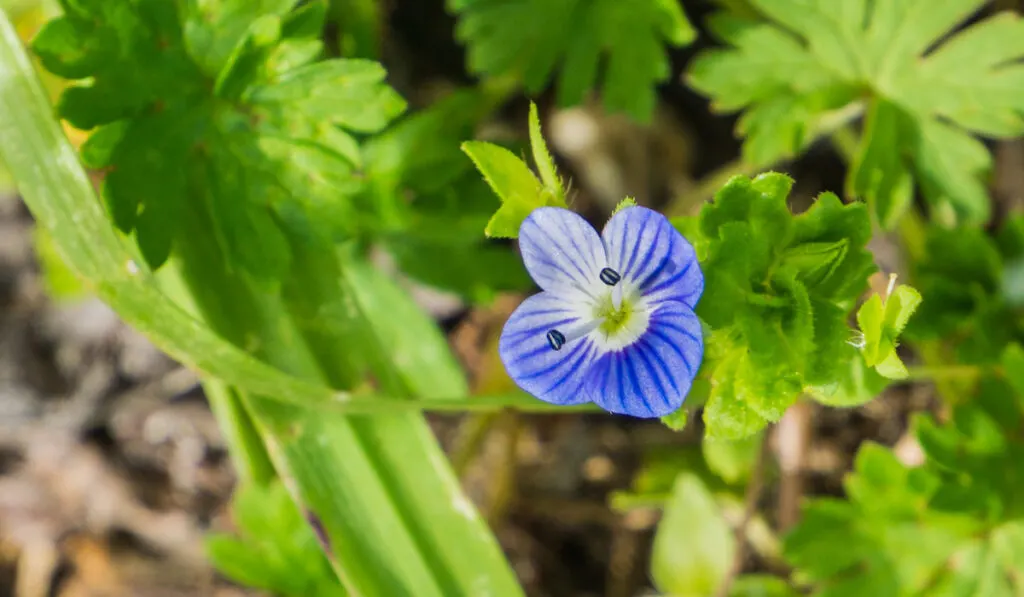
Also known as gypsyweed, the 460 species of speedwells have been found in Europe, Asia, North America, and parts of New Zealand.
The plants differ so much from one another in size, color, and shape (of both the plant and the flower itself), describing them all would be impossible.
Traditionally, speedwells were eaten (especially the American speedwell) and used in medicine (usually as teas), but they’re still particularly useful as ground covers in flower gardens.
7. Sundrops
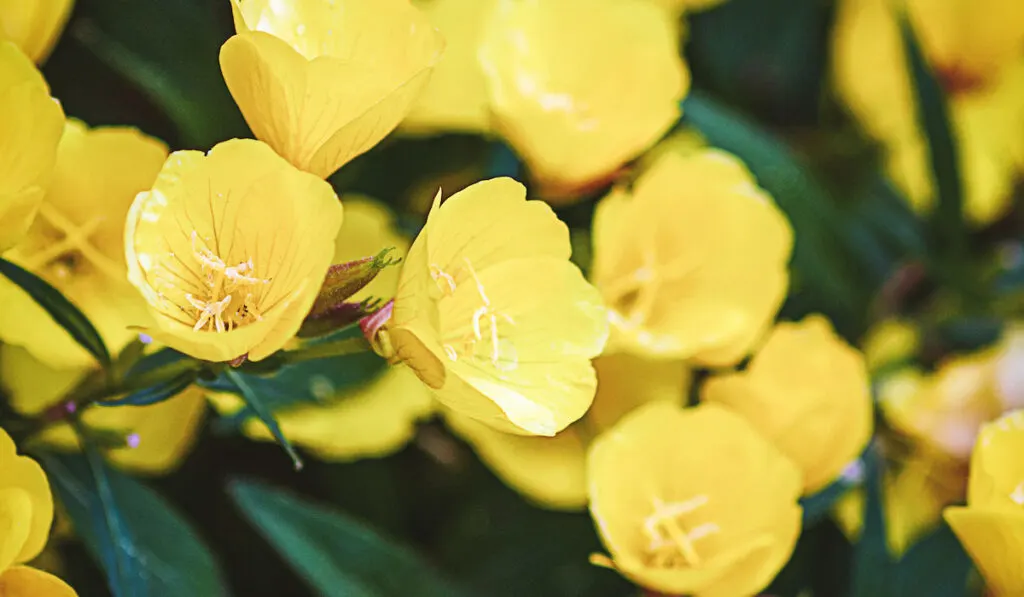
There are more than 140 species of sundrops, all of which are native to North and South America but have spread all over the world (particularly in temperate regions).
You may also know these plants under the names evening primrose and suncup.
Depending on the species, soil fertility, and climate, these plants can grow from 4 inches to 10 feet in height, while the flowers themselves open up at night.
The flowers are usually yellow, but they can also be white, purple, red, and pink.
8. Sea Lavenders
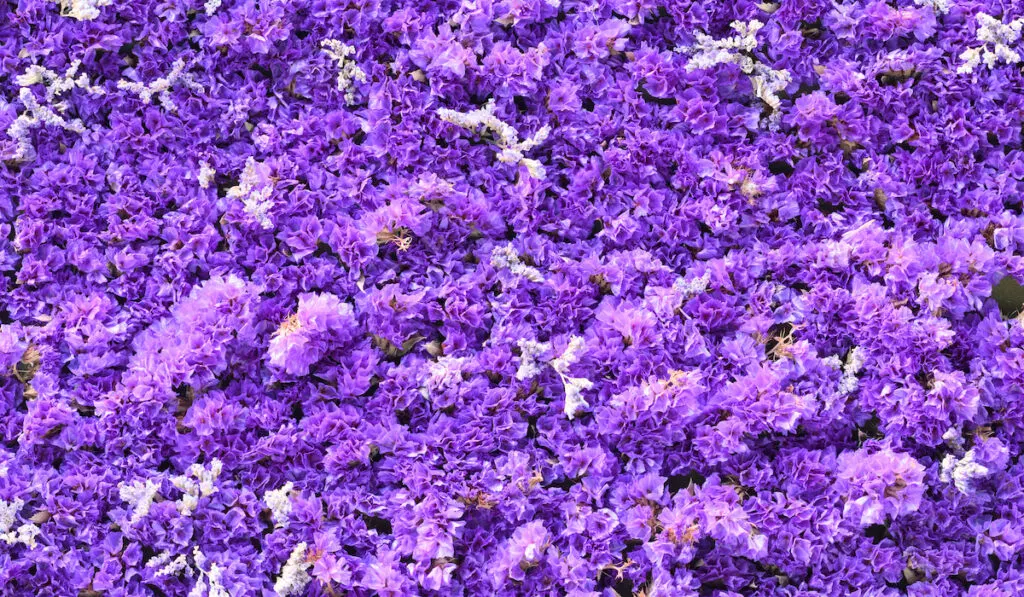
Sea lavender species can be found in North America, Europe, Africa, Asia, and Australia, and the number exceeds 600 species. These plants are interesting as they grow into shrubs.
Often taller than 7 feet, the branches of Sea Lavenders are full of flowering stems that develop purple flowers, which is how they got their name, although some species bloom with yellow flowers.
It’s important to note that the ‘sea’ part of their name stems from the fact that they usually grow in saline soil – near marshes or the sea.
9. Sage

There are more than 1,000 plants called sage, most of which belong to the family Lamiaceae. Aside from Antarctica, these plants can be found all around the world.
Sage flowers can be pink, red, blue, purple, or yellow, depending on the exact species.
In the wild, they grow in clusters, and they were once eaten and used for tribal ceremonies.
10. Sea Thrifts

Most often occurring by the sea, the sea thrift grows well in sandy soil and on cliffs.
It can be found on European and North American coasts, where you can easily recognize it by its pink flowers, although they’re sometimes purple, blue, and white.
While sea thrifts aren’t common in everyday gardens, they’re a great addition in minimalist gardens, especially in dry climates, as well as rock gardens.
11. Shooting Stars
Shooting stars are found in North America, most often in extremely dry environments, and are super easy to recognize because of their characteristic flowers.
As the name suggests, they look like shooting stars!
The petals of shooting star flowers are usually velvety, and they pull away from the yellow center, making the flower look like a shooting star.
Shooting stars grow well in arid environments and rock gardens, which is why they’re so common in the Mojave Desert.
12. Siberian Bugloss
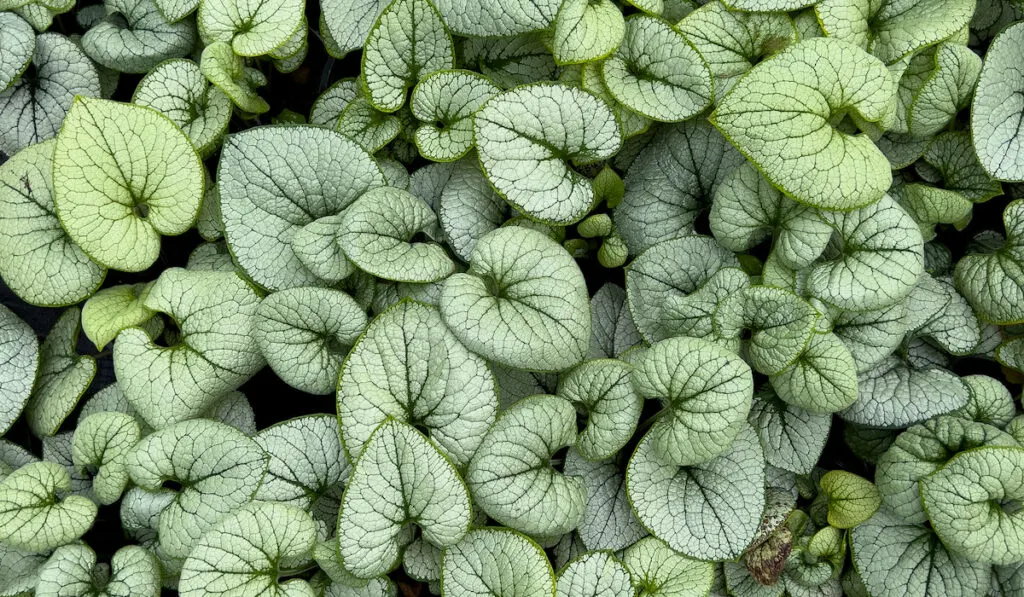
This lovely plant, most often found in the Caucasus, can grow up to 18 inches in height, especially when they grow in moist areas with some shade.
The Siberian Bugloss has flowers that are small and characteristically blue, growing in clusters.
You may also find this plant under the name ‘heartleaf’ because of its heart-shaped leaves, as you might have deduced from the name.
13. Siberian Iris

Despite its name, this species of iris can be found all over Europe and even in some Central Asian countries.
Like most irises, it can grow up to 30 inches and blooms beautiful blue flowers in the spring, which die and become yellow in the fall.
The Siberian Iris is a poisonous flower that can cause extreme intestinal pain, which is why it should never be ingested.
For the same reason, this plant was used as an ingredient in various laxatives.
14. Sneezewort
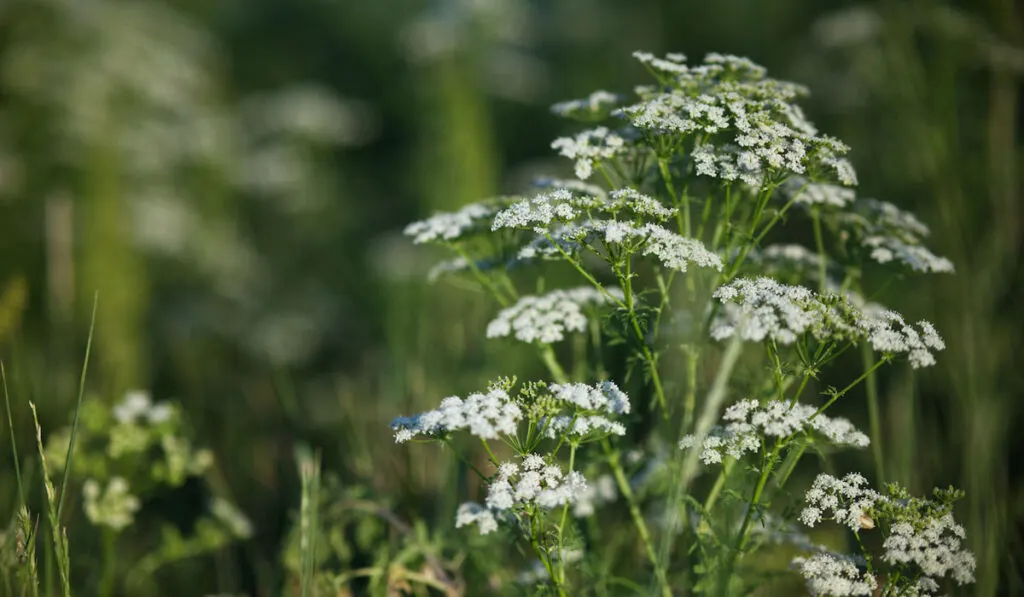
Also known as sneezeweed, sneezewort is a flowering plant native to Europe and western Asia, although it’s been naturalized in some places in North America.
This plant grows clusters of small, white flowers that are easily recognizable.
Although they probably don’t taste good, the flowers of sneezewort are entirely edible, and the leaves repel insects.
Interestingly, chewing on the plant causes a numbing effect in the mouth, which is why it was traditionally used as toothache medicine.
To End
As you can see, many of these plants are rooted (pun intended) in traditional medicine and cuisine, with sage, Siberian iris, snowdrops, and snowflakes being the most popular examples.
Some plants, such as sea thrifts, sea lavenders, and shooting stars need a particular climate to thrive, while other species, such as soapworts and stonecrops, can grow uncontrollably and require more care in our gardens.
